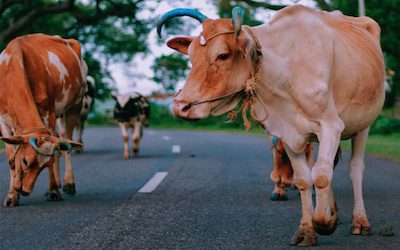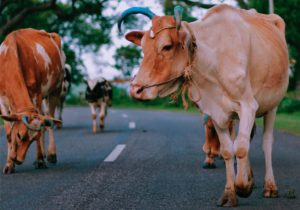
Amrutpani/Amrut Pani-Elixir for dead soil
The nectar is a late drink, which refreshes the deities, and has the power to revive the dead. Similarly, the Amrutpani activates the living soil, and turns the dead soil into living soil. This is a liquid manure. Like Panchagavya, the use of Amrutpani is also used to improve soil fertility.
Fresh cow’s dung contains nutrients not only for plants but also in the amount of millions of soil-friendly micro-organisms. When dung is fed well to micro-organisms, then they multiply, and when you feed these microorganisms to the soil, the soil is alive. Not only do they improve soil structure, but they begin to break the nutrients available in the soil in a form that can be easily taken by plants. The process of making Amrutapani is basically the process of increasing the number of life’s already available microbials in the fresh cow dung of Indian breed.

Materials Required for Amrutpani:
1. The fresh cow dung of Indian breed – 1 kg.
2. Cow urine of Indian breed – 1 liter.
3. Jiggery – 50 grams (sugarcane juice can be replaced with 2 glasses or raped six bananas)
4. Water – 10 liters.
Preparation method:
Phase 1:
1. Take a container of plastic or wood, add water and jaggery to it and mix it well.
2. Mix fresh cow dung and cow urine in the mixture, stirring the mixture with a wooden stick.
Phase 2:
Mix the water again in the mixture and stir it slowly in the same direction and bind the container’s face to the clothes.
Phase 3:
Amrutpani is ready for use in 4 days, mixed with wooden sticks 3 times a day.
Preparation time:
4 days.
Use:
1. Mix one liter of nectar-water with 10 liters of water and use it.
2. Use Amritpani to irrigate it every week.
3. The root treatment should be done 30 minutes before planting.
4. Dried leaves or dried sugarcane leaves are soaked in Amrutpani and used as mulch.
5. By giving water to plants using Amrutpani on a weekly basis, Amrutpani keeps the soil alive and enriches nutrients.
6. If the sprouting of nectar-water once in a week or 14 days, the infection of pests on plants can be reduced, as well as better use by the foiler-spray.
7. Before planting soak the seeds in nectar-water for 24 hours, after which use of seed yields better germination rate and stronger plants.









